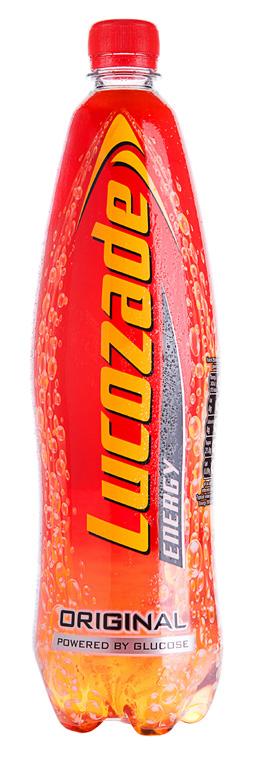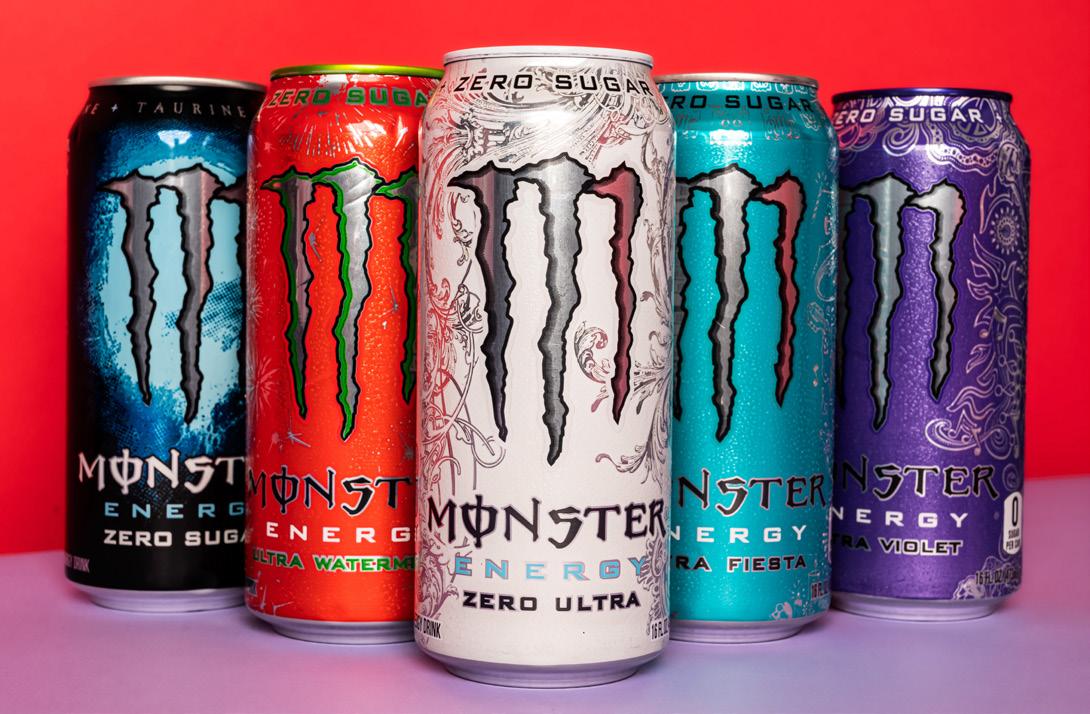
3 minute read
COMPETITIVE THREATS
Subject to rising regulation, the drinks industry is fiercely competitive and Monster locks horns with myriad rivals besides Red Bull, many of them boasting financial, marketing and distribution clout. Yet despite an influx of competition, Monster is more than holding its own by launching new products, entering new markets and establishing money-spinning sponsorship partnerships.
While Monster’s partnership helped Coca-Cola establish its presence in the energy drinks market, this didn’t prevent the soft drinks powerhouse branching out to offer an energy drink of its own, ‘Coca-Cola Energy’, though the tipple failed to gain significant market traction.
Nevertheless, Coca-Cola does own sports drink maker Bodyarmor, while PepsiCo (PEP:NYSE) owns Rockstar and other competitors span everyone from Lucozade-owner Suntory (2587:TYO) to Starbucks (SBUX:NASDAQ), Keurig Dr. Pepper (KDP:NASDAQ) and smaller rival Celsius (CELH:NASDAQ), a specialist in ‘healthier’ sugar-free energy drinks made from natural ingredients.

UK competition comes from the likes of Britvic (BVIC), the soft drinks group behind fastgrowing energy brand Purdey’s. Irn-Bru maker AG Barr (BAG) recently acquired energy drinks business Boost.
Monster’s Strategic Brands segment mainly includes various energy drink brands acquired from Coca-Cola as well as affordable energy brands. Other parts of the business include Alcohol Brands, which features various craft beers and hard seltzers bought as part of 2022’s $330 million acquisition of CANarchy Craft Brewery Collective, while the ‘Other’ division includes certain products from Monster’s American Fruits and Flavors subsidiary sold to independent third-party customers.
Durable competitive advantages include Monster’s brands and the thousands of registered trademarks it already has around the world, as well as the ever-expanding distribution of its products.
Monster Beverage is an asset-light business since it doesn’t operate its own manufacturing facilities for finished goods. Instead, it buys the ingredients, concentrates, bottles and cans which are then delivered to third-party bottlers and contract packers. This business model enables the company to generate high returns – operating margins north of 30% and return on capital employed for 2019, 2020 and 2021 of 31.3%, 30% and 26.3% respectively – and copious amounts of cash.
DOES MONSTER STILL HAVE MOMENTUM?
The company has yet to publish its results for 2022, but 2021 was the firm’s 29th consecutive record year of rising sales, despite the impact of Covid on supply chains and retail customers, with net sales increasing by 20% to $5.5 billion.
Its last reported set of figures were good. Third quarter 2022 sales hit $1.62 billion, up 15.2% year-on-year despite a strong US dollar headwind, with revenue growth driven by the Monster Energy Drinks segment, where sales fizzed 13% higher to $1.5 billion.
Sales in the Strategic Brands segment bubbled up 19.3% to $88.8 million, while sales to
Monster's biggest shareholders
customers outside the US shot up 15.8% to $610.6 million amid expanding brand distribution in international markets.
On the negative side of the ledger, gross margins softened from 55.9% to 51.3% as Monster absorbed higher ingredient, packaging, aluminium can, transport and warehousing costs. However, the impact of elevated input costs was partially mitigated as Monster flexed its muscles and raised prices.

Schlosberg stressed that gross margins increased on a sequential quarterly basis thanks to price hikes and easing supply challenges. ‘While aluminium pricing is easing, cost inflation, including increases in ingredient and other input costs, freight and fuel costs and co-packing fees, remain challenging,’ he conceded, though he believes that some of the increased costs are likely to be transitory.
As a growth-focused stock, Monster doesn’t pay dividends at the moment, though the company has a robust balance sheet with $1.3 billion in cash and cash equivalents, $1.35 billion in shortterm investments and $72.4 million in long-term investments at the end of September. This liquidity and the company’s cash generation is supporting capital returns to shareholders by way of earningsenhancing share buybacks.
WHAT DO ANALYSTS THINK?
Management believes Monster Beverage is well positioned to profit from the expansion of the global energy drinks market and according to Stockopedia, analysts agree, being overwhelmingly bullish with four ‘strong buy’ ratings and 12 ‘buy’ recommendations versus nine with ‘hold’ ratings. There isn’t a single ‘sell’ rating, which might surprise given Monster Beverage commands a premium rating.

Consensus calls for net profits of $1.22 billion and earnings per share of $2.3 for 2022, bubbling up to $1.58 billion and $3 respectively in fiscal 2023. Based on those estimates, Monster trades on 44.4 times estimated 2022 earnings, falling to 34 times current year earnings, though this does represent a derating from 50 times-plus as recently as 2016.
‘Our innovation pipeline of both alcoholic and non-alcoholic beverages continues to be robust and exciting,’ said Sacks at the recent results, pointing to the (January 2023) launch of Monster Energy Zero Sugar into US retail and the launch of a first flavoured malt beverage alcohol product in the first quarter of 2023, namely ‘The Beast Unleashed’.
By James Crux Funds and Investment Trusts Editor











